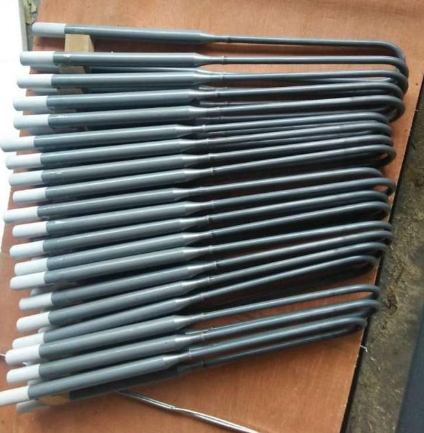- 06
- Nov
What are the heating elements of the muffle furnace?
What are the heating elements of the muffle furnace?
The heating elements of the muffle furnace include electric furnace wires, silicon carbide rods, and silicon molybdenum rods.

Electric stove wire:
The electric furnace wire is made of iron-chromium-aluminum and nickel-chromium electric heating alloy wires. The power of the furnace wire is controlled by a computer, and it is wound by a high-speed automatic winding machine. It mainly includes iron-chromium-aluminum alloy electric furnace wires and nickel-chromium alloy electric furnace wires. The former is an alloy material with ferrite structure, and the latter is an alloy material with austenite structure. Both the chromium-aluminum alloy electric furnace wire and the nickel-chromium alloy electric furnace wire have a melting point below 1400℃, and they are generally at a very high temperature (hot state) under working conditions, and they are prone to oxidation reaction in the air and burn Disadvantages.
Silicon carbide rod:
Silicon carbide rods are rod-shaped and tubular non-metallic high-temperature electric heating elements made of high-purity green hexagonal silicon carbide as the main raw material. In an oxidizing atmosphere, the normal use temperature can reach 1450℃, and the continuous use can reach 2000 hours. Silicon carbide rods are hard and brittle, resistant to rapid cold and rapid heat, are not easily deformed at high temperatures, and are used at high temperatures. They have the characteristics of high temperature resistance, oxidation resistance, corrosion resistance, fast temperature rise, long life, small high temperature deformation, convenient installation and maintenance, etc., and they are good Chemical stability.
However, the silicon carbide rod element can have the following effects with oxygen and water vapor when used for a long time above 1000 ℃:
①Sic+2O2→Sio2+CO2 ②Sic+4H2O=Sio2+4H2+CO2
As a result, the SiO2 content in the element gradually increases, and the resistance increases slowly, which is aging. If the water vapor is too much, it will promote the oxidation of SiC. The H2 produced by the reaction of formula ② combines with O2 in the air and then reacts with H2O to create a vicious circle. Reduce component life. Hydrogen (H2) can reduce the mechanical strength of the component. Nitrogen (N2) below 1200°C can prevent SiC from oxidizing and reacting with SiC above 1350°C, so that SiC can be decomposed by chlorine (Cl2) and Sic can be completely decomposed.
Silicon molybdenum rod:
Silicon molybdenum rods can usually be used at a furnace temperature of 1600°C-1750°C. They are widely used in metallurgy, glass, ceramics, magnetic materials, refractory materials, crystals, electronic components, furnace manufacturing and other fields. They are used for high-temperature sintering of products* The ideal heating element.
The silicon molybdenum rod is exposed to a high-temperature oxidizing atmosphere, and a quartz protective layer is formed on the surface to prevent the silicon molybdenum rod from continuing to oxidize. When the component temperature is greater than 1700°C, the quartz protective layer melts, and the component continues to be used in an oxidizing atmosphere, and the quartz protective layer is regenerated. Silicon molybdenum rods should not be used for a long time in the range of 400-700℃, otherwise the components will be powdered due to strong oxidation at low temperature.
